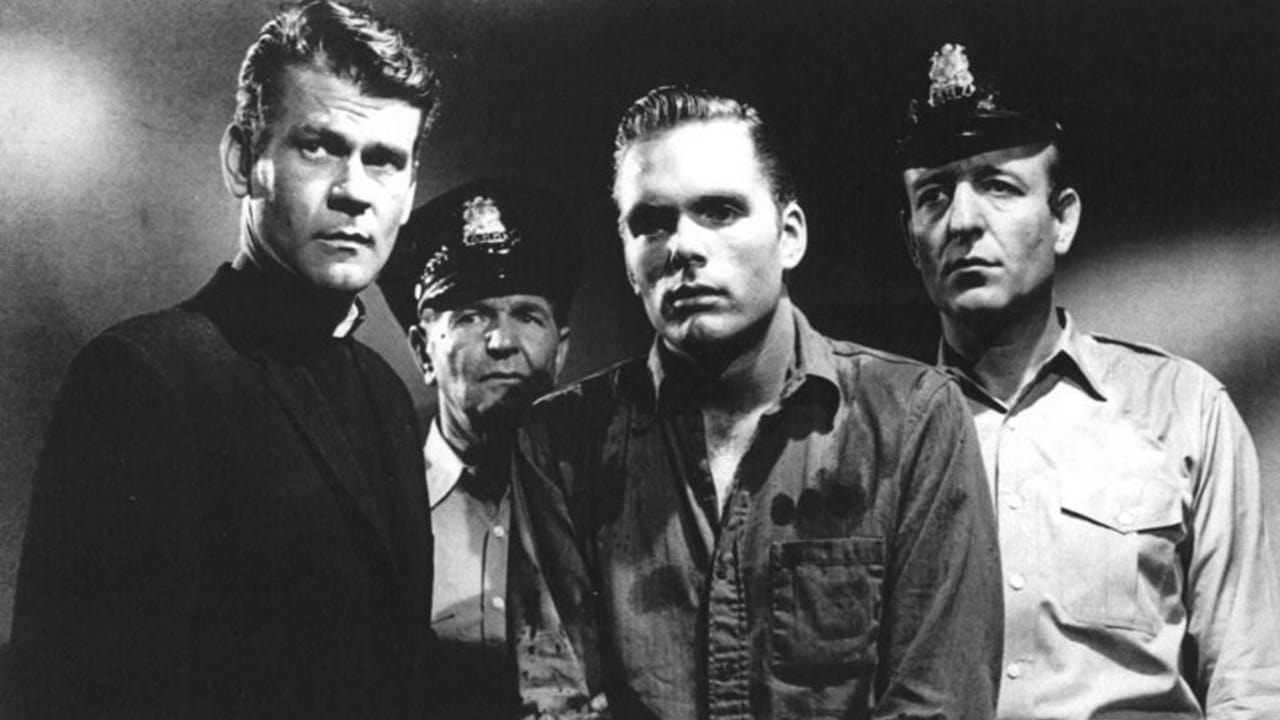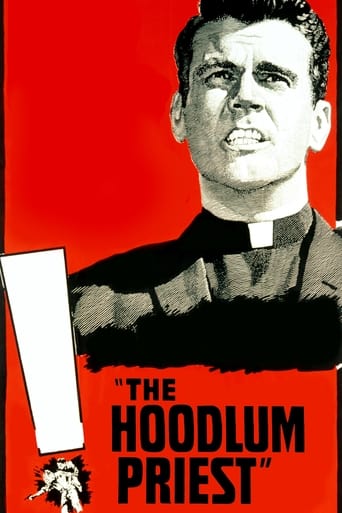



Most undeservingly overhyped movie of all time??
Gripping story with well-crafted characters
Dreadfully Boring
Great story, amazing characters, superb action, enthralling cinematography. Yes, this is something I am glad I spent money on.
View MoreI am 75 years of age and I remember seeing the movie sometime when it came to TV. It was not my sort of movie then or now. I could not recommend this movie to anyone today. I do think however that Don Murray, as Father Clark, did some great acting in this movie.I started my freshman year at a Catholic high school, De La Salle Military Academy, in 1955. The entire first week was a Catholic retreat (religion). I can not remember now if Father Clark did one day of the retreat or the entire week. I seem to think he did the entire week.I was 14 years old and a Catholic and had gone to only Catholic schools. I had never heard of Father Clark.As soon as I saw and heard Father Clark I was thinking this guy is crazy. I was thinking why are the Christian Brothers allowing a crazy man to be around a bunch of kids? Later they had confession and I was sent into a room, alone, with Father Clark to hear my confession. He grabbed me and started to wail or say something about it will be OK or something like that. I did the confession thing and got the hell out of there.I think the movie got a lot correct about Father Clark. But if they had shown the real Father Clark it would have been a much different movie and I do not think it would have been shown.But if you want to get a little bit of an idea about what Father Clark was like then the movie and Don Murray do a pretty good job of it.
View MorePerhaps if the halfway house the Hoodlum Priest envisioned as a way of diverting ex-cons away from criminality and recidivism had been built in time, Keir Dullea wouldn't have died in Missouri's gas chamber in one of most memorable execution scenes ever. The movie starts with Dullea's release from prison and reunion with a former partner in crime. They plot a robbery of a St. Louis strip joint in a seedy part of the city. Don Murray as the Hoodlum Priest offers another avenue for Dullea, and it looks good for him after he meets the daughter of one of the city's wealthy families at a cool poolside party where Murray solicits contributions for the nation's first halfway house from St. Louis's wealthy matrons. Pushing the other side of the agenda is not law enforcement but a newspaper reporter who's job is to sensationalize crime in order to sell more papers and generate ad revenue. It's all well-captured and presented, though a bit preachy at times, in authentic scenes from the streets of St. Louis by should-be-better-known director Irvin Kershner.
View MoreI was 13 when this film came out and while I don't know for sure why I never got to see this. I'm guessing, morals being what they were at the time; this was probably judged to rough a movie for a boy my age. It probably would have been a R rated movie in it's day. So when I saw it listed on Turner Classic Movies I thought great, I finally get a chance to see this old film. Well now that I've seen it I'm amazed this film gets so much buzz. I found it to be way to melodramatic, over acted and just plain hammy. I'm not sure how this could have ever been relevant. I know that Father Clark did great work in his time; but this seems a poor way to tell his story. Almost everyone in this movie is over acting. I'm guessing that's the fault of the director, but that doesn't make it any easier to sit through. I'm sure many will be drawn to this film by Keir Dullea's name in the cast. Dullea's fame comes from 2001 a film whose uniqueness at the time; pulled along most of the actors who happened to be in it. Like the Hoodlum Priest there were no great performances in that film either. A film for film school students, theater majors, and nostalgia buffs. A corny waste of time.
View MoreIrv Kerschner, who was George Lucas' teacher at USC and later directed one of his pupil's Star Trek features, made this glossy well-meaning melodrama released by United Artists in 1961. Shot on location in St. Louis and featuring the semi-documentary but often overly self-conscious B&W cinematography of Haskell Wekler, the story is based on the real life story of a Jesuit priest --perhaps the first man in America to set up a half-way house for ex-cons. Although its heart is in the right place, and the film makes the plea that the criminal justice system in the United States only serves to criminalize young offenders rather than reform them, Kershner cannot resist all the obvious opportunities to be arty: chases through railroad yards and into abandoned buildings with broken furniture and boarded-up windows providing the right shadows on the wall. He also hammers home his point by squeezing out the last drop of melodrama from the shaky plot, including a totally implausible electric chair sequence with the priest admitted into the chamber as his hoodlum friend is about to be electrocuted. The film tries to have its cake and eat it, too. In real life the Irish priest was helped to build his halfway house by a Russian-Jewish immigrant attorney, Morris Shenker, but the film homogenizes their relationship; the young offenders somehow feel as if they dropped out of "West Side Story," made the same year, because they were unable to sing and dance.
View More